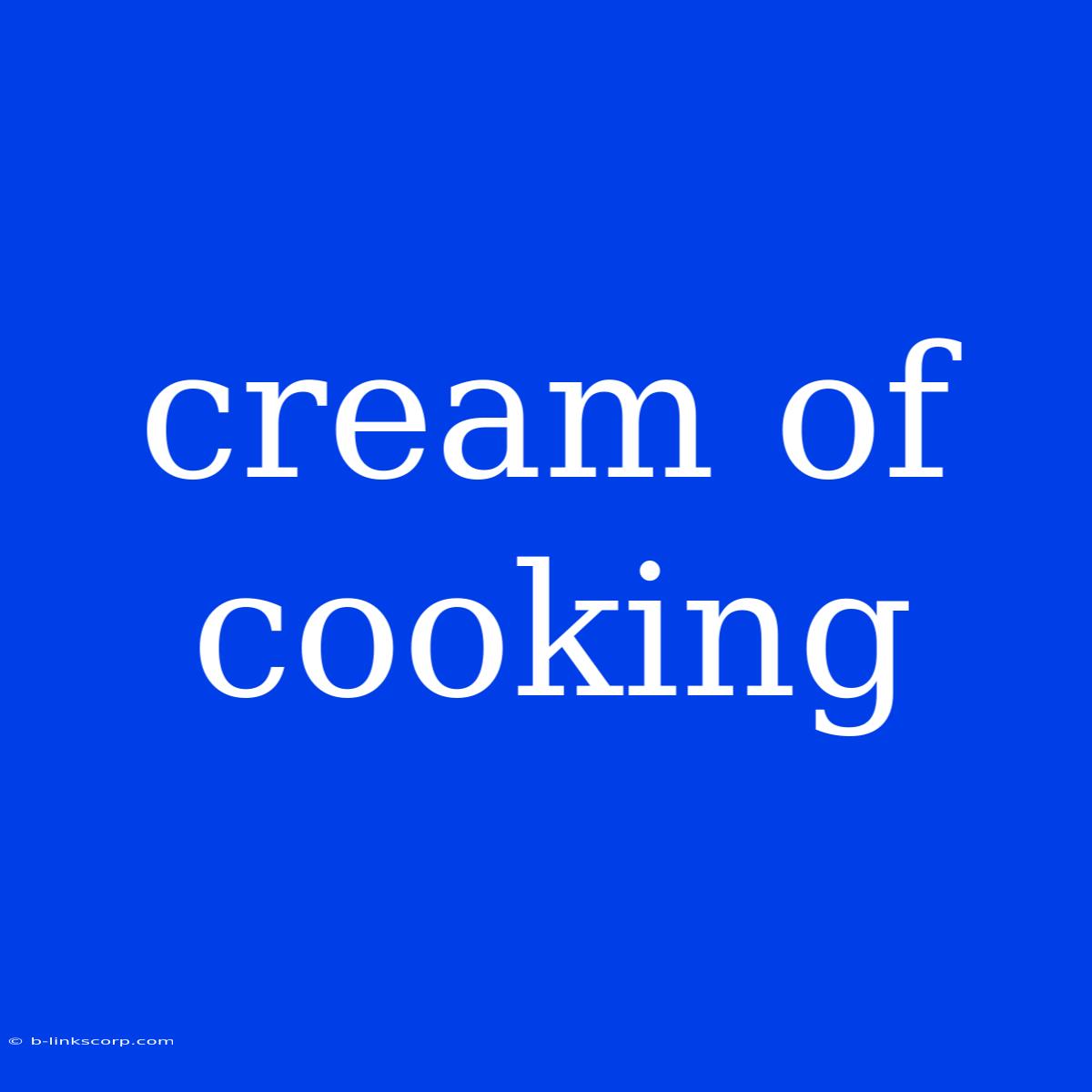Creamy Delights: A Comprehensive Guide to Cooking Cream
Cooking cream, a staple in kitchens worldwide, plays a key role in elevating dishes from ordinary to extraordinary. Its rich, velvety texture and delicate flavor add a touch of decadence to sauces, soups, and desserts. But navigating the world of cooking cream can feel overwhelming. This comprehensive guide will help you understand the different types, their uses, and how to incorporate them into your culinary creations.
What is Cooking Cream?
Cooking cream is a type of dairy product with a higher fat content than milk, usually ranging from 18% to 36%. This high fat content contributes to its creamy texture, richness, and ability to thicken sauces. The fat content also impacts its stability and ability to withstand high heat without separating.
Different Types of Cooking Cream:
1. Heavy Cream:
- Fat Content: 36% or higher
- Characteristics: Thickest and richest type, ideal for whipping into heavy whipped cream, enriching soups, and adding body to sauces.
- Uses: Whipped cream, sauces, soups, desserts
2. Thickened Cream:
- Fat Content: 30% to 36%
- Characteristics: Similar to heavy cream but slightly thinner, offering a good balance of richness and stability.
- Uses: Whipped cream, sauces, soups, desserts
3. Half and Half:
- Fat Content: 10% to 18%
- Characteristics: A blend of milk and cream, less thick than heavy cream but still adds creaminess.
- Uses: Coffee, lattes, smoothies, sauces
4. Light Cream:
- Fat Content: 18% to 20%
- Characteristics: A lighter option with a thinner consistency than heavy cream.
- Uses: Sauces, soups, coffee, cocktails
5. Whipping Cream:
- Fat Content: 30% to 36%
- Characteristics: Specifically formulated for whipping into stable, fluffy whipped cream.
- Uses: Whipped cream toppings, desserts, frostings
Choosing the Right Cooking Cream:
Selecting the appropriate cooking cream depends on your desired outcome:
- For whipping: Heavy cream or whipping cream are essential for creating stable whipped cream.
- For thickening sauces: Heavy cream or thickened cream provide a rich, velvety texture.
- For enriching soups: Heavy cream or thickened cream add richness and depth of flavor.
- For everyday use: Half and half offers a lighter option for coffee or smoothies.
- For lighter sauces: Light cream provides creaminess without overwhelming the flavor.
Cooking with Cream:
Cooking cream can be used in various ways:
- Adding richness: Incorporate a splash of cream into soups, stews, and sauces to add richness and depth of flavor.
- Thickening sauces: Simmer cream with other ingredients to create a smooth, velvety sauce.
- Creating whipped cream: Whip cream into fluffy peaks for toppings, desserts, or frostings.
- Baking: Use cream in cakes, cookies, and other pastries for a rich, moist texture.
Tips for Using Cooking Cream:
- Heating cream: Avoid boiling cream as it can separate. Simmer over low heat or add it near the end of cooking.
- Substituting cream: If you're short on cream, you can use milk and butter as a substitute.
- Storing cream: Refrigerate unopened cream for several weeks. Once opened, store it in the refrigerator for 3-5 days.
In conclusion, cooking cream is a versatile ingredient that can elevate your culinary creations to new heights. Understanding the different types and their properties will help you choose the best option for your dish and enhance its flavor and texture. Remember to experiment and find your perfect creamy balance.

